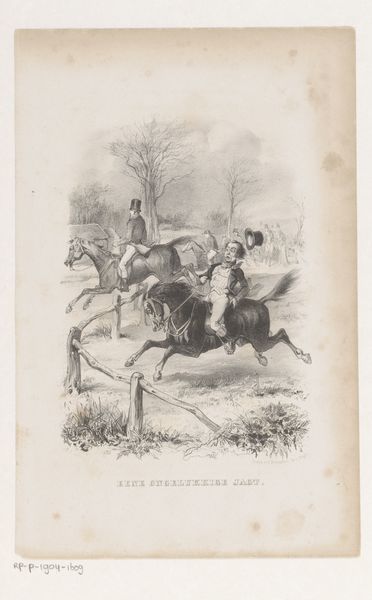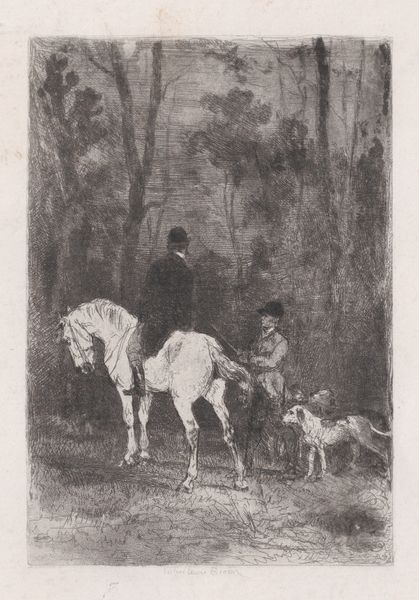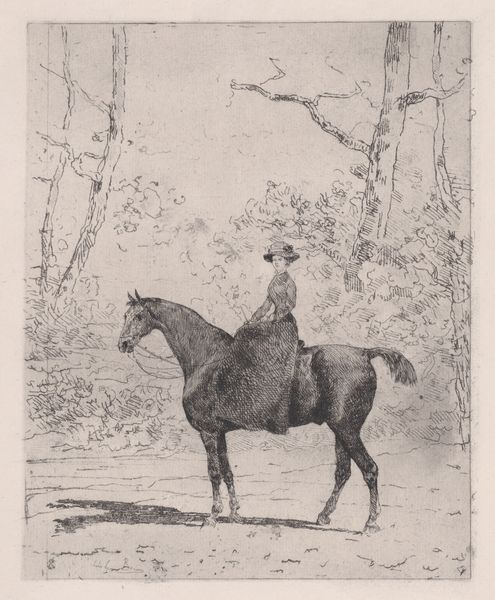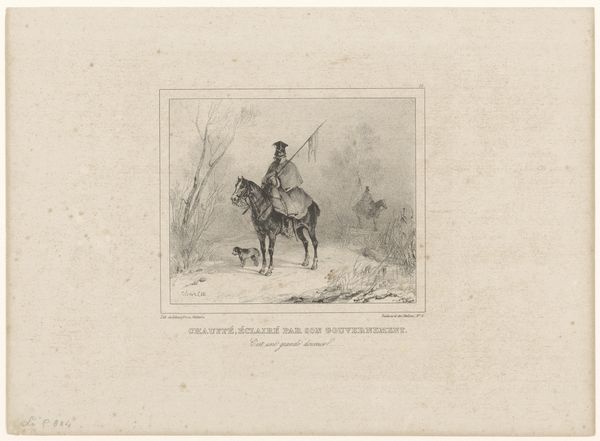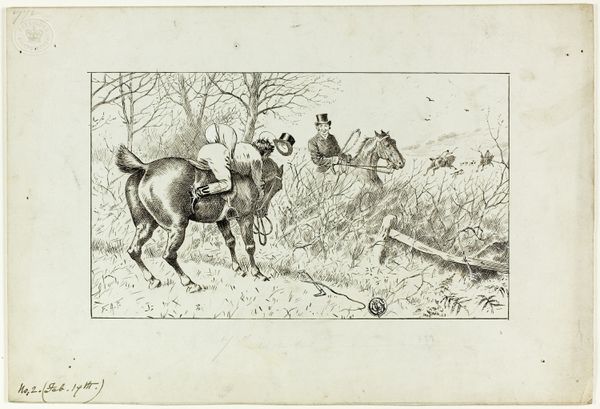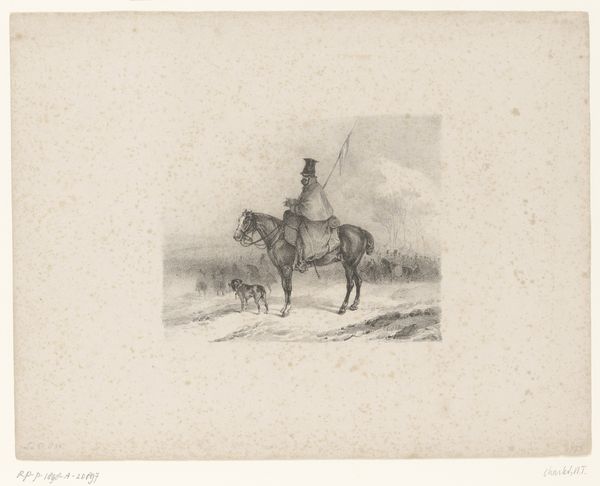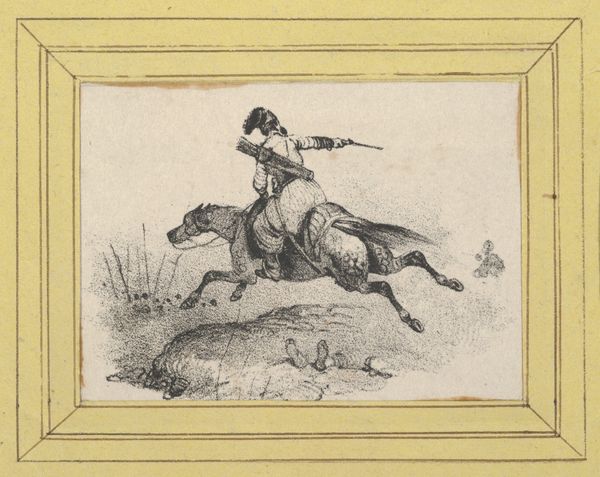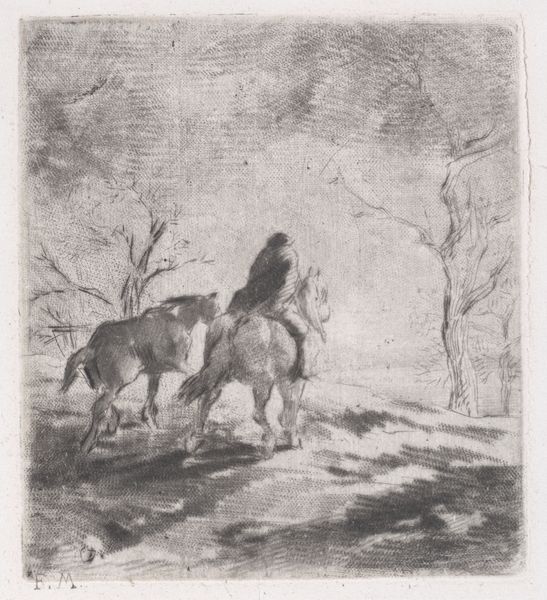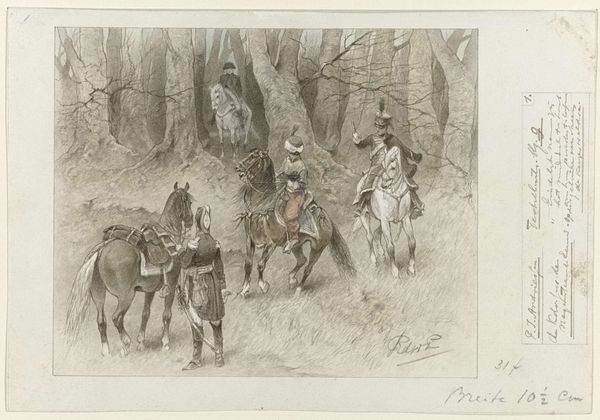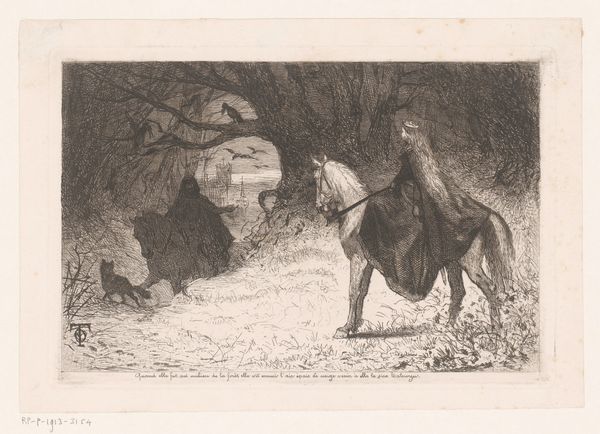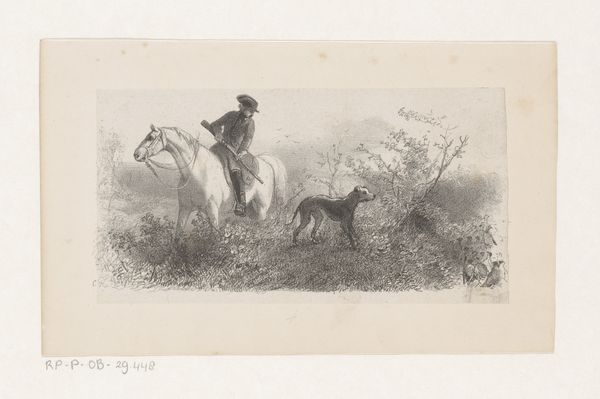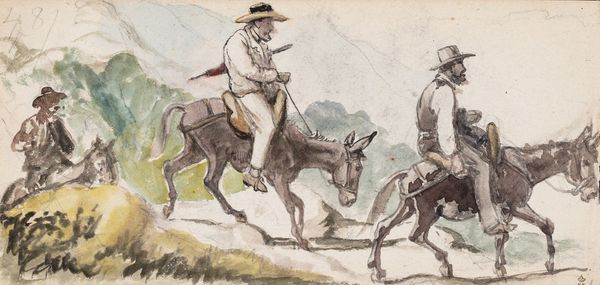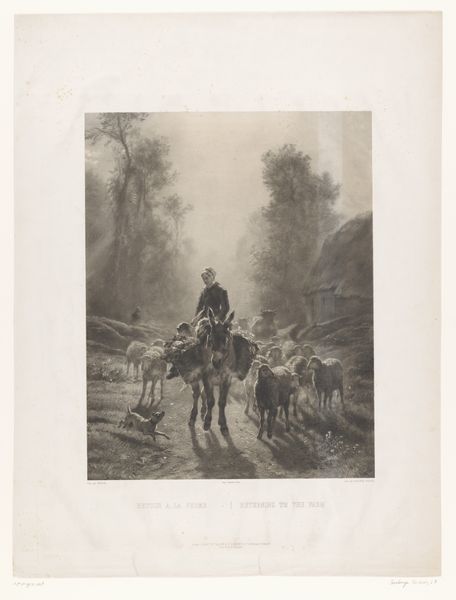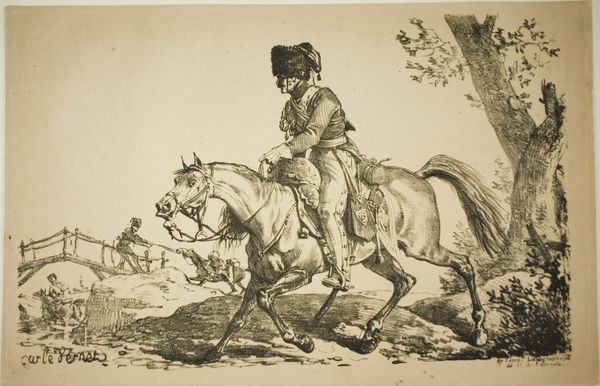
Dimensions: image: 293 x 209 mm primary sheet: 405 x 293 mm secondary sheet: 447 x 321 mm
Copyright: National Gallery of Art: CC0 1.0
Curator: This is "After the Hounds," an 1886 engraving by William Henry Shelton. There's a notable emphasis on line work throughout the whole composition. Editor: My initial thought is that there is such subdued energy here. Despite the action of the hunt, there’s an underlying stillness in the woman’s posture and the overall monochromatic palette. Curator: Well, consider the means of production: the engraving process itself encourages a precise, controlled application, forcing the subject to be still. That speaks volumes about class and the leisure time of the upper class in late 19th-century society, doesn’t it? Editor: Absolutely. It’s interesting to consider that tension. There’s this implied narrative of a hunt, a pursuit of something, yet the artwork itself presents such a curated and static image. Hunting became a social performance, a way for elites to assert their status, wasn’t it? Curator: Precisely. Even the landscape feels managed. It's Romantic but not wild, emphasizing possession and control over the natural world. This brings to question the artist's socio-economic stance through production—Shelton's market at the time was mostly middle and upper class, wasn't it? Editor: I believe you're right, and how the artwork may serve to validate, reinforce and disseminate cultural ideals prevalent at the time it was produced. It really highlights how art becomes a reflection and tool of social structures. Even the choice of the etching speaks to a particular taste within a segment of society. Curator: Exactly! That linear style becomes another layer of the whole image as cultural artifact rather than the subject being portrayed alone. Thinking about the material limitations of this type of print also reflects class aspirations within a quickly changing society, it’s intriguing isn’t it? Editor: Yes, reflecting on how an image is so meticulously crafted for a specific audience is, I think, incredibly enriching. Curator: Indeed. Considering the social implications intertwined within these production techniques enhances the viewing experience for the observer. Editor: For sure. It helps bring to light how art does so much more than representing; it truly embodies.
Comments
No comments
Be the first to comment and join the conversation on the ultimate creative platform.
